The COVID-19 pandemic has definitely highlighted the market shifts toward innovation, flexibility, and transparency. .
Obviously, when the old school does not work, the new one is being created. This way the buzzword Agile has been invading one after another all the economic sectors.
In 2023, some enterprises are willing to intensify their Agile transformation while others are only at the start of their exciting journey. Anyway, this post is aimed to help both parties and clear up what Agile Transformation Office (ATO) stands for and how it may supercharge teamwork.
With this article, you will learn the following:
- Agile Transformation vs Agile Adoption
- Top Agile Transformation Benefits
- Four Things to Establish Agile Transformation Office
Before reading the article, we suggest you familiarize yourself with our company by watching the video.
Agile Transformation vs Agile Adoption
But before we are going to talk about ATO and its strengths, let us open the discussion with a highly important question: What differs Agile transformation from Agile adoption? Although the terms tend to be mistakenly used in the context, they represent two fundamentally different things.
Agile adoption implies a relatively short-term, straightforward process of a team implementing Agile project management methodologies (like Kanban or Scrum). In short, companies are training their teams so that employees master the technology and take advantage of the tools to the fullest. Thus, there is no drastic change involved, nor is there a long planning process. Also, teams may adopt Agile only for a while to perform one specific project.
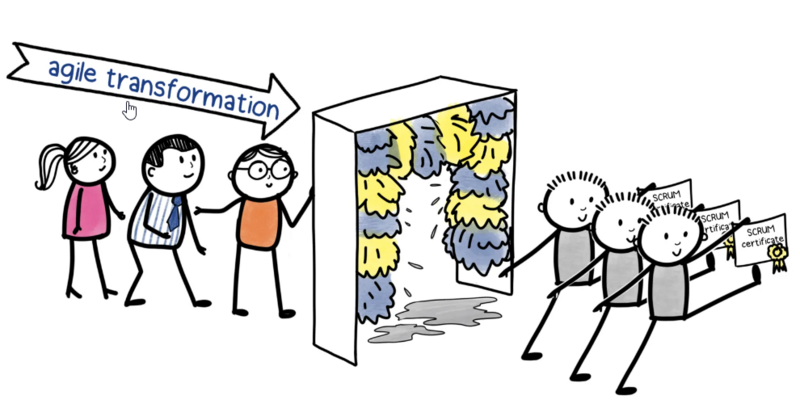
Agile transformation, in turn, is a long-term solution, a fundamental transition. It covers all the enterprise processes, from corporate culture and values to structural hierarchy, and basically crafts a company’s new mindset. To embrace the Agile principles, any business requires a comprehensive and balanced approach, so the transformation may take many years to be accomplished. Planning is far more complex than in Agile adoption, and project managers should have the expertise in Agile ceremonies and their postulates.
Overall, both processes significantly benefit any business. Still, Agile transformation is what may bring you greater rewards on a large scale.
Migrate to secure hosting
Don't waste your time on Redmine maintenance. Hire experts and focus on your projects
Top Agile Transformation Benefits
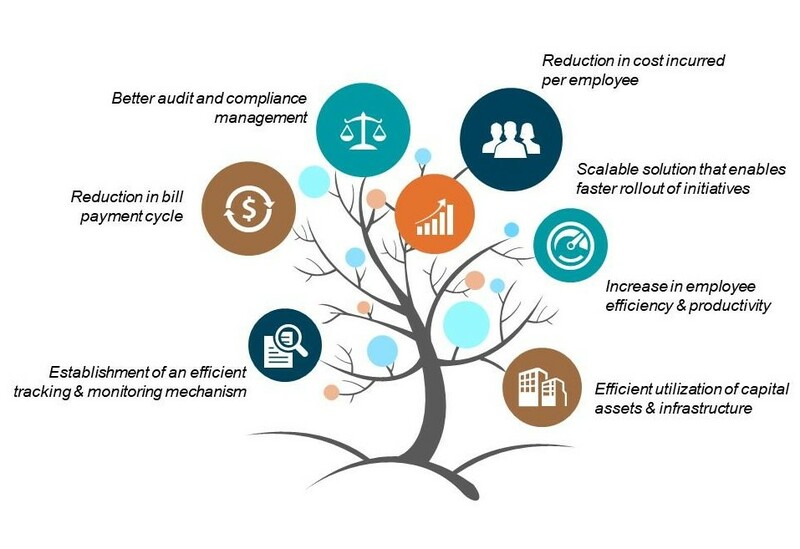
No secret, the Agile approach has numerous benefits to keep enterprises competitive and relevant in today's ever-changing world. According to the leading Agile supporter McKinsey&Company, being a consciously Agile organization implies the focus on the following:
- People: uncommittedly devoted leadership as an inspiring coach, not a director; informal communication and networking; talent management.
- Processes: quick decision-making; ongoing hypotheses discussions; performance management.
- Structure: mission-oriented approach; simplified reporting.
- Technology: IT infrastructure meets business needs; adaptive architecture.
All this gives birth to a network of highly functional teams who are operating in rapid decision-making sprints with a common vision in mind. After all, Agile transformation pays off.
1) Cross-Team Cooperation
Teams are encouraged to create autonomous solutions and refine their workflow by breaking it down into manageable tasks. Also, Agile makes face-to-face interaction a priority so that everyone stays in the loop thanks to regular online or offline meetings.
2) Customer-Centricity
With better user research at the heart of development strategy, Agile teams are empowered to meet fast-changing customer needs, including market trends. The iterative development model refers to constant client feedback so that the final deliverables absolutely hit the targets.
3) Higher ROI
Better results with less effort. Sounds fantastic, doesn’t it? Agile transformation encourages teams to focus only on those projects that deliver a higher return on investment (ROI). By continuous value reassessment, Agile companies tend to learn from mistakes and do proper work on errors, which involves cutting out waste areas to reduce costs.
4) Shared Creativity Culture
Sharing values is essential in Agile culture, as it fosters a better goal understanding and creates experimental space. Employees understand where their company is heading and what place they have in this journey. Eventually, the feeling of being appreciated is what boosts their motivation.
RedmineUP Solutions
Extend your Redmine functionality with our solutions and services
Four Things to Establish Agile Transformation Office
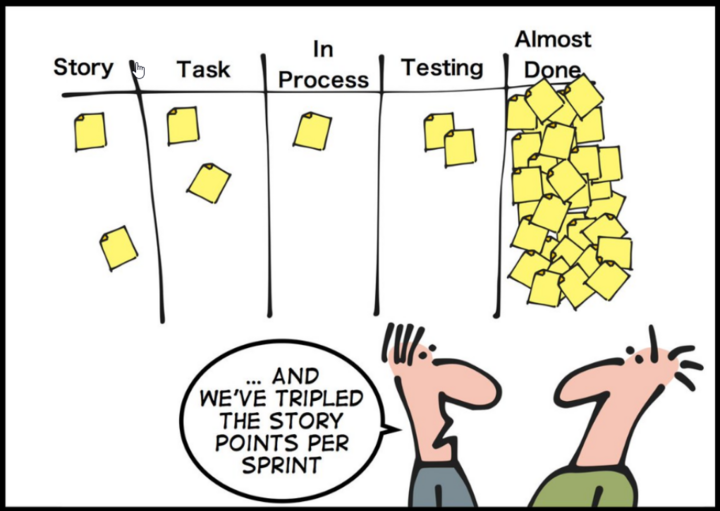
1. Analyze your current workflow. Outline goals that you are willing to accomplish.
To go to the point B, start with reassessing your point A:
- How Agile are your current leadership and management processes?
- Are your team leaders familiar with the principles of Agile? Can they teach their teams, or do you need a special mentor?
- What are possible pitfalls that may stop ATO in your company?
- What do your employees think of such fundamental changes? Are they excited?
The main thing is to gather as much feedback as possible. Altogether with the team, outline the objectives that you all hope to achieve and determine the approximate timeline.
Migrate to secure hosting
Don't waste your time on Redmine maintenance. Hire experts and focus on your projects
2. Build a functional leadership team. Create a roadmap.
Take your time and decide who is going to spearhead your ATO. Depending on the inner structure of your company, your leadership team may include a different number of members (team leaders, managers, developers, outsourcing employees, etc.). Think of successful Agile companies and try to have a proper conversation with their managers. Do not stop looking for inspiration.
Next, define your scope of work as if it was any other Agile project. So, divide this huge challenge of socio-cultural and structural modifications into smaller logical phases and make an easy-to-follow sprint schedule. No sooner does a person get his mind-blowing ideas down on paper than they take shape and get real. The same thing happens if you put all ATO into your backlog like we do in RedmineUP. Then you can see a bigger picture on your Agile board:
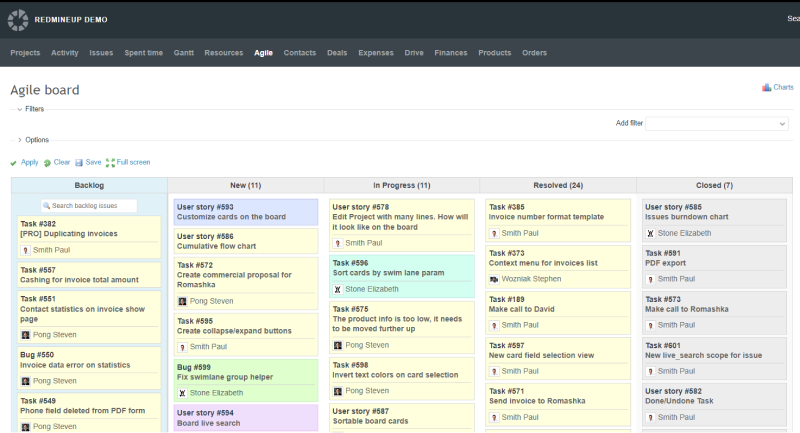
3. Make a pilot project. Optimize your Agile processes.
Before you scale up your ATO, start with its prototype. It is not only a wonderful way to prove to everyone that Agility is a success key but also a great example to test your current environment and detect weak spots. So, put your team together and focus on making one pilot project. Set a deadline (e.g. a rolling 90-day plan) and keep tracking with regular check-ins. If necessary, make adjustments.
To make the workflows run smoothly, find the powerful technology. RedmineUP is a market project management veteran with thousands of happy users. The software is designed to enable users complete Agile transformation in the most successful way possible. Plan Agile sprints, manage available resources, and track what is being worked on and by whom. Learn more about a popular open-source tool here.
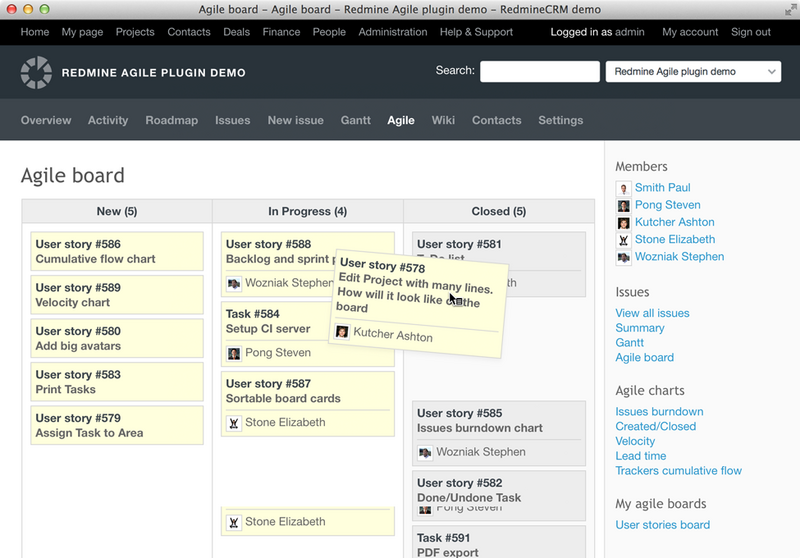
4. Train your team. Keep growing all the time.
Make sure that everyone in your team keeps up with Agile pace. If needed, hire an Agile specialist to help your staff acquire Agile basics. Host regular training sessions, make open discussions, and collect your team's feedback. Reward them. Make Agile a significant part and ally of your corporate culture.
Build, learn, improve with RedmineUP. We are here to make your life easier.
RedmineUP Solutions
Extend your Redmine functionality with our solutions and services
Learn from our video below how to upgrade your Agile plugin from the light version to the PRO version.


